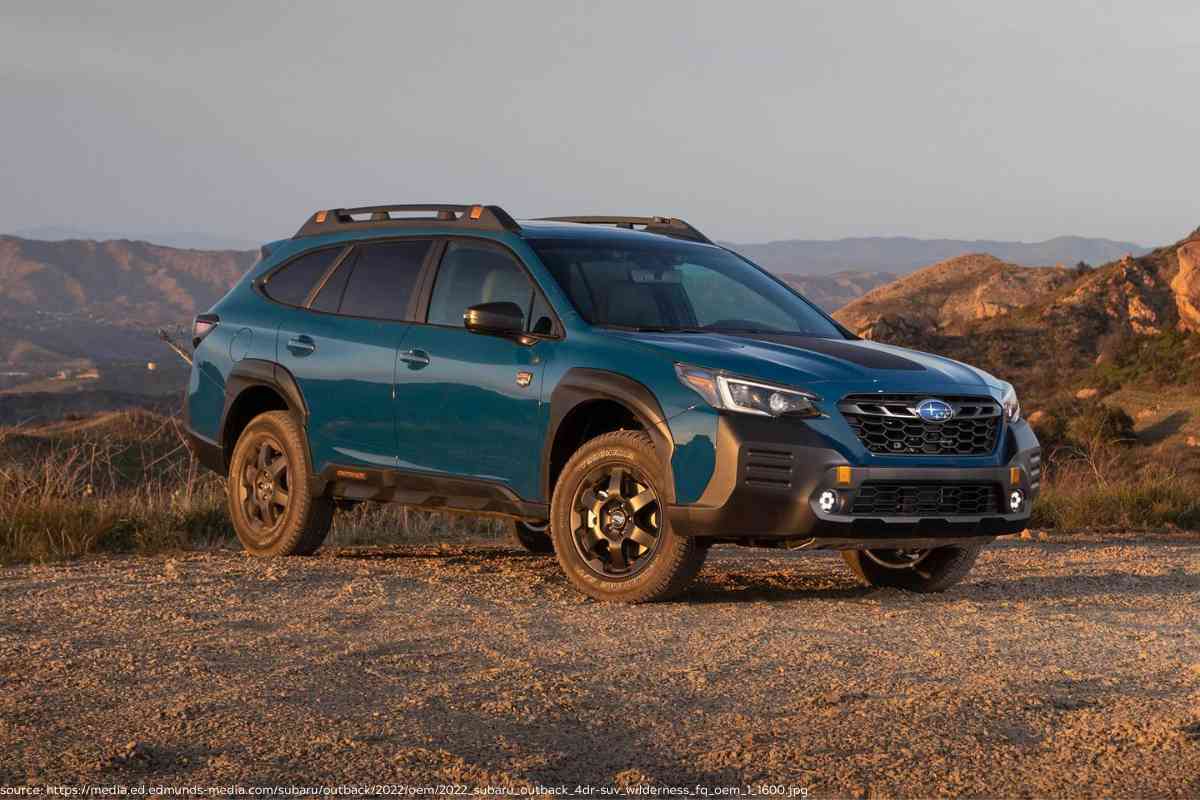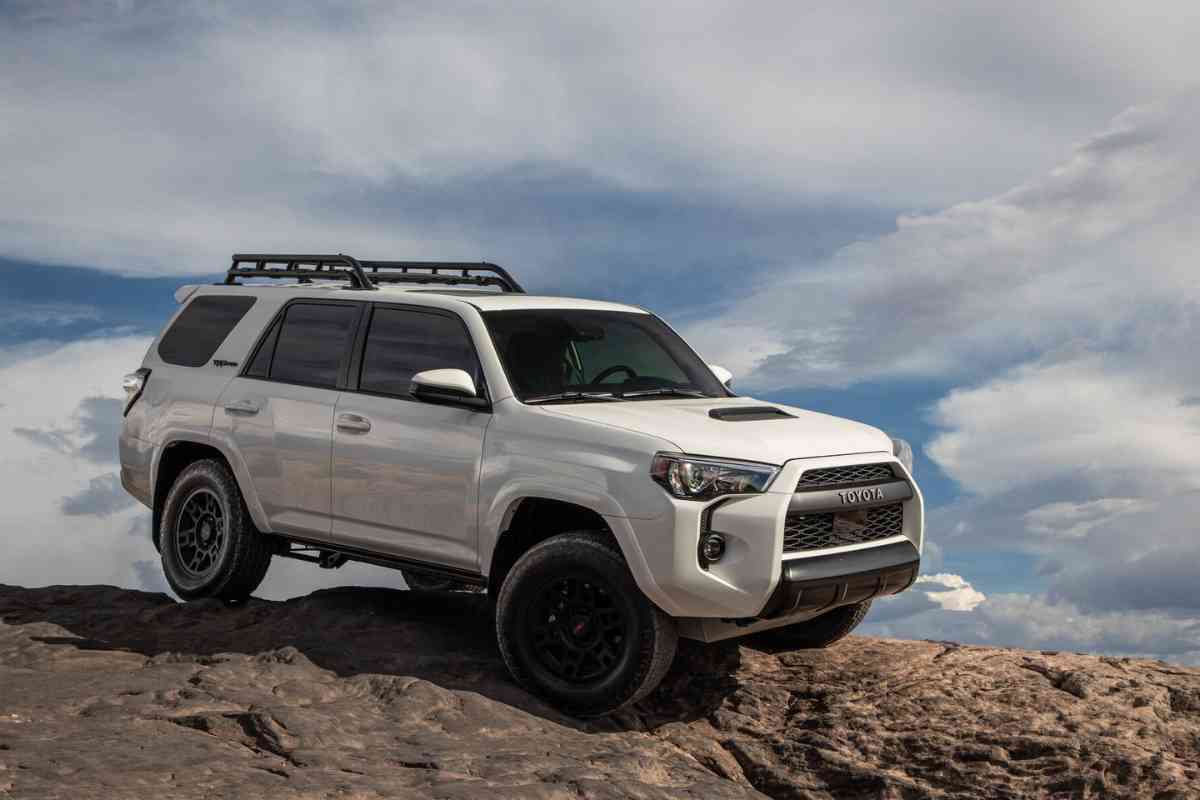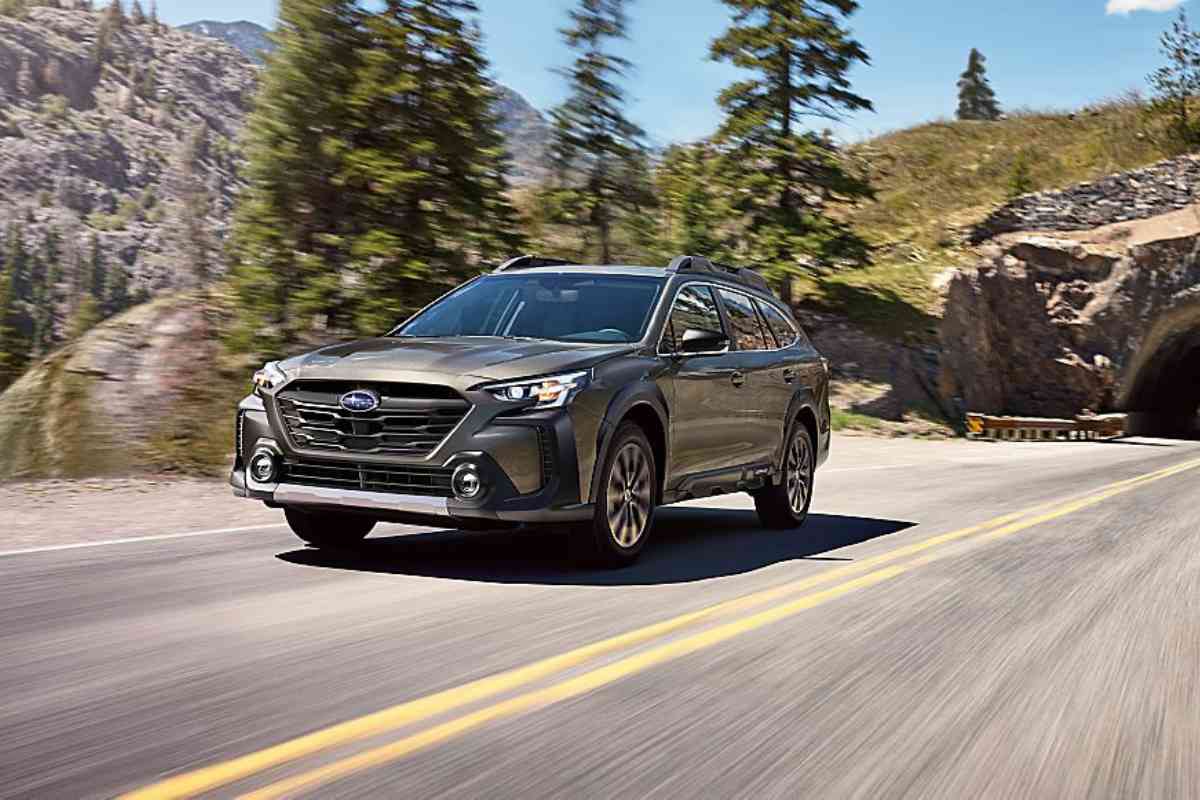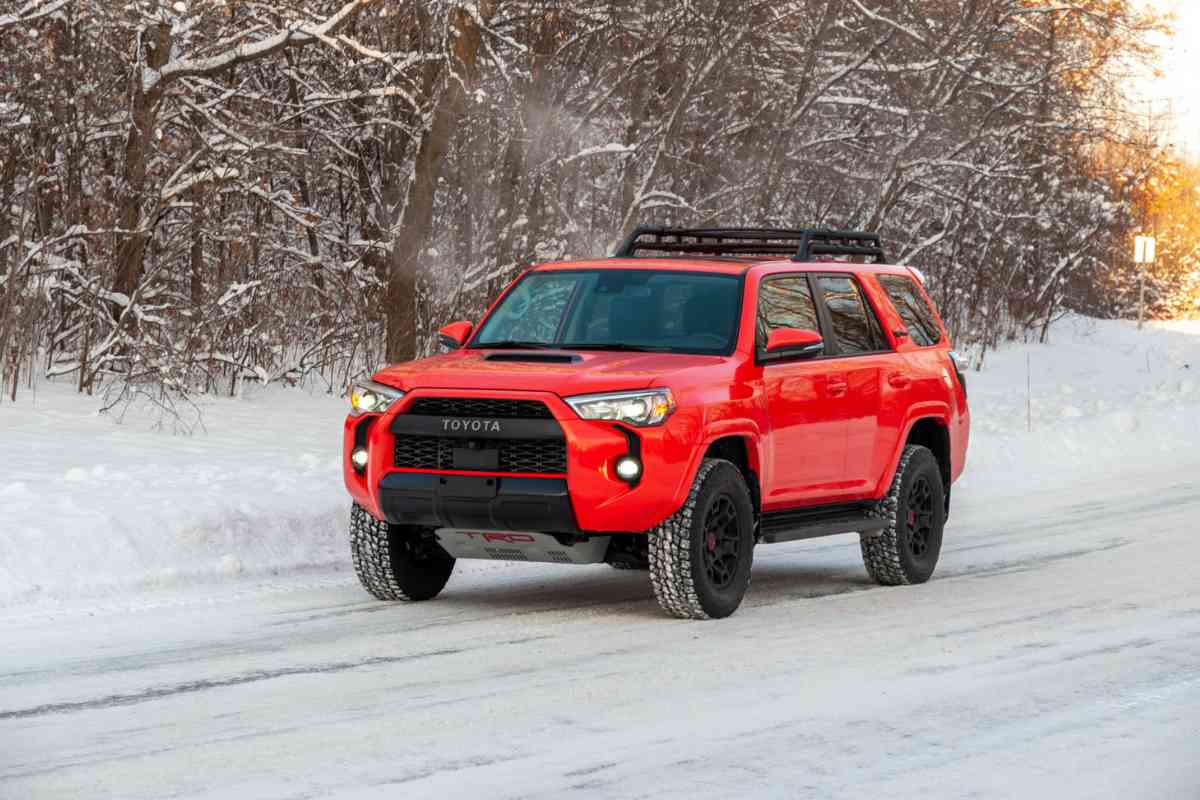2023 Toyota 4Runner vs. 2023 Subaru Outback: Which SUV is Right for You?
A comparison of the Toyota 4Runner and Subaru Outback may help you decide which SUV works best for you. The vehicles outperform each other in different ways.

Is the Outback or the 4Runner better?
The Outback is the more affordable and efficient option, while the 4Runner is a more powerful performer. Subaru Outback’s average price is $28,174, and 4Runner’s is $39,556. The 4Runner outperforms the Subaru in fuel efficiency registering 16 / 19 / 17 MPG for the city, highway, and combined terrains, while Subaru’s is 26 / 32 / 28 MPG. So, the choice for the right SUV depends on your needs.
I was scouting for a new SUV for my weekend trips and holidays with family, and a friend suggested the Outback and 4Runner. My priority would have to be fuel economy and fuel efficiency. We visited an auto service technician to learn more about the 4Runner and Outback.
Overall, the Toyota 4Runner is more of a traditional-style SUV that resembles a truck. This translates to the vehicle having a storing frame, making it easy to tow or even haul when larger loads are involved.
Besides that, it has significantly more ground clearance. Additionally, it has one of the best four-wheel drive systems, making it a perfect car for severe off-road obstacles and challenges.
Conversely, the Subaru Outback is more of a Crossover SUV. It has a unibody car structure that resembles many other SUVs. It is a general outdoor vehicle with perfect features for excellent performance in the wild.
One feature that stands out in a Subaru Outback is the increased underground clearance. It also has a complex all-wheel drive system with perfect traction handling even on slippery roads.

The current Outback is better than the previous versions that came earlier. Its styling includes improved features and better power. It also looks aesthetically pleasing too.
Unlike the Toyota 4Runner, which has remained the same, the Outback’s recent redesign makes it tremendous and more aesthetically pleasing for the modern family/ driver.
The article will compare crucial features that every driver/ car owner should always consider when buying an outdoor car. While the two SUVs may offer varied approaches to the same tasks, the vehicles also have differences that make them stand out.
The two vehicles have the same length/ size, passenger and cargo space, and powertrains. However, their unique features make them great for adventure-focused usage.
With these, one may be confused about which of the two cars to settle for since they seem equally capable. Read on to know what would work best for you. The focus is on specific comparison elements.
General Comparison of the 4Runner and Outback
Both the Outback and 4Runner are excellent SUVs for outdoor adventures. If you are the kind of person that loves adventure and is not willing to trade their comfort, then these two vehicles are great options to go for.
| Features | Subaru Outback | Toyota 4Runner |
| Average cost comparison | $28,174 | $39,556 |
| Warranty | Basic warranty – 3 years / 36000 milesDrivetrain warranty – 5 years/ 60,000 milesRoadside assistance warranty – 3 yr/ 36,000 miles | Basic warranty – 3 years / 36000 milesDrivetrain warranty – 5 years/ 60,000 milesRoadside assistance warranty – 2 yr/ unlimited miles |
| Fuel capacity | 18.5 gallons. | 23.0 gallons |
| Weight | 3,641 lb | 4,400 lb. |
| Cargo space | 32.6 cu. Ft. | 47.2 cu. Ft. |
| Fuel Economy | City terrains – 26 MPGHighways – 32 MPGCombined terrains – 28 MPG | City terrains – 16 MPGHighways – 19 MPGCombined terrains – 17 MPG |
The two off road cars are excellent for family use, although they have different variations and excel in different ways.
The important thing is to prioritize comfort, space, and safety. Compare the difference between the two vehicles’ features and always weigh the pros and cons of each car before settling on the right SUV.
Below are some of the few aspects you can consider at a glance:
Cost
The 2023 Subaru Outback goes for an average price of $28,174 and a starting MSRP cost of $28,395.
On the other hand, 4Runner average cost is $39,556, and the MSRP price of $39,555. In this way, the Outback offers better value than the Toyota 4Runner.
Warranty
The Outback comes with a 3 yr/ 36,000 mi basic warranty and a drivetrain warranty of 5 yr./ 60,000 mi., and roadside assistance warranty of 3 yr./ 36,000 mi.
On the other hand, the Toyota 4Runner comes with a three yr./ 36,000 mi and a drivetrain warranty of 5 yr./ 60,000 mi., and roadside assistance warranty of 2 yr./ unlimited mi. The Outback has a better warranty. So, choose the right vehicle based on the warranty you prefer.
Pros
The Outback is preferred or chosen for its All-around capability, versatile interior, and great integrated touchscreen.
On the other hand, the Toyota 4Runner is often chosen for its Rugged capacity, variety of options/ choices, and excellent appearance. Both vehicles have their strengths, and what you choose depends on what you want in an off-roading vehicle.
Cons
The Outback has several negative traits, including the cartoonish front end, insufficient space/room, and sluggish base engine/ ground clearance.
The Toyota 4Runner’s downside includes a bouncy ride, poor fuel economy, and a tight cabin which may affect its cargo volume. You should choose the vehicle with the least negatives to get the best value for your money.

Features
Both SUVs have similar features, which include standard Bluetooth, standard cruise control, standard satellite radio, standard adaptive cruise control, cloth upholstery for the interior, heated seats, a sunroof, and standard folding rear seats.
However, the two vehicles also differ in several other ways. Both SUVs have a seating capacity of 5.
Differences Between the 4Runner and Outback
Fuel economy
The 4Runner consumes 16 / 19 / 17 MPG for the city, highway, and combined terrains, whereas the Subaru Outback’s fuel economy is 26 / 32 / 28 MPG for the City, Highway, and Combined terrains.
Fuel Capacity
The Outback’s capacity is 18.5 gallons. At the same time, that of the Toyota 4Runner is 23.0 gallons.
Weight
The Outback’s curb weight is 3,641 lb., while the Toyota’s is 4,400 lb.
Ground Clearance
The ground clearance for the Toyota is 9.0 in., while the Outback’s is 8.7 in.
Wheels base
The Outback wheelbase is 108.1 in. while the Toyota’s is 109.8 in.
Cargo Space
The cargo space of the Outback is 32.6 cu. Ft. while it is 47.2 cu. Ft. in the Toyota 4Runner. This is considerably ample space for a family that goes on adventures often.
Engines

Toyota 4Runners come with a one-engine option. Some of its trims come with rear-wheel drive, although most 4Runners come with normal/ standard 4-wheel drive.
On the other hand, Subaru Outback is an all-wheel drive for all models, but buyers have a choice between two engine types. Each engine type has a specific performance capability that buyers must consider when chopping.
The first is the 4-liter V6 engine with 270 horsepower and 278 lb-ft torque. The second option would be the 5-speed automatic transmission engine.
As for fuel economy, the 4Runner is estimated to consume 18 mpg for a combined rear and 4-wheel drive. The Subaru Outback’s fuel efficiency depends on the type of engine.
The 2.5 liter, 4-cylinder engine has/ 182hp, 176 lb-ft of torque, consumes 29 mpg combined, and the optional turbocharged 2.4liter 4-cylinder engine has 260 hp, 277 lb-ft, consumes 26 mpg combined. The two engines use continuous variable automatic transmission (CVT).
The 4Runner tends to have more power with its V6 engine, while the Outback offers several engine choices. It also manages to outdo the 4Runner when comparing the EPA fuel economy.
Rather than just focusing on the numbers, The Toyota 4Runner engine is known for having excellent freeway speeds. Unfortunately, this means it makes a lot of noise and may not be the best experience for drivers looking for quieter rides.
Additionally, the engine is slower even though it has more power. When tested, the Outback has an optional turbocharged 2.4-liter engine and goes from 0-60 mph in 6.1 seconds, while the 4Runner takes 8.4 seconds. You may want to factor in this aspect when accelerating on the highway or whenever you want to pass a slow vehicle.
The Interior and Utility
The two SUVs come with sufficient space to accommodate five passengers. Usually, the Toyota 4Runner has a third-row seat for some of its configurations that allows a seven-seat arrangement with a bigger capacity.
However, the extra third-row seat is cramped and may not be suited for adults. Instead, it should be reserved for children who don’t take up much space in the vehicle.
The space in the 5-passenger 4Runner is 46.3 cubic feet, which covers the cargo space behind the rear seats. On the other hand, Subaru has a smaller cargo space measuring 32.5 cubic feet.
The difference between the cars is significant enough to know that the 4Runner has a bigger trunk; hence it can take more small-sized suitcases. This means you can carry more.
The Toyota 4Runner also performs better in towing. It offers maximum towing capacity. It can take up to 5000 pounds when well-equipped, while the Outback can only tow 3500 pounds. The Toyota can easily pull a small boat/ car trailer with these weight specifications.
The Subaru, on the hand, can only handle lighter trailers. The Subaru also performs well regarding cabin design and the materials’ quality.
It has a better, crisper, and larger touchscreen, making it aesthetically pleasing. The dashboard is made of high-quality materials. It may be shorter than 4Runners, but the Outback feels spacious, roomy, and with sufficient headroom to accommodate adults.
The Toyota’s interior prioritizes functionality over aesthetics. This means it has sturdy and large knobs. A hollow plastic is utilized in the car’s construction; hence it may not feel upscale.
Going for the Subaru is more appropriate if you are looking for a modern design outdoor SUV. However, if you are more into functionality and want increased cargo space and a lot of passenger cabin space, the Toyota 4Runner is the best option.
Technology

The tow vehicles take different approaches. Subaru Outbacks have a center touchscreen measuring 11.6 inches. The graphics are crisp and very appealing despite having a steep curve.
Its buttons are difficult to find and the voice command system may not be the most effective as it takes time to understand the natural language.
The Toyota’s infotainment system had much more bare-bones, with a tiny 6.1-inch screen and a low resolution with poor graphics. The newer car versions come with larger and more detailed featured screens.
Regardless of the 4Runner you want, audio controls are large and very easy to use. It also comes with optional and standard driver aids.
Older models of the 4Runners, such as those built in 2019 and before, do not come with many drive aids, including the adaptive cruise control and the lane departure warning.
Fortunately, the newer models from 2020 onwards come with most of these aids as standard equipment. However, the Outback has a better advantage over the Toyota since it has perfect adaptive cruise control systems and automatic emergency braking with a better and faster response than the 4Runner.
Most people will likely prefer the infotainment screen in the Subaru Outback instead of the 4Runner. It doesn’t matter that it may take longer to learn, but the resolution and graphics are superior.
This does not mean that the 4Runner is not appealing. It’s huge chunky knobs. Cooped with the simplicity of the dashboard layout makes it a great choice.
How it Feels to Drive the Vehicles
The driving experience also matters when choosing SUVs. The Subaru Outback tends to be quieter and much more comfortable than the Toyota 4Runner.
It has excellent handling and precise steering. On the other hand, the Toyota is not as fun, especially when it is windy, since the Toyota comes with a loose steering feel, especially on the highway.
Subaru’s seats tend to be more supportive and soft, making them great for long road trips. Compared to Toyota seats, the Subaru Outback seats are flatter but work for daily commutes. Just watch out for fatigue on longer road trips.
When looking for a perfect off-road experience, things are different. The Outback does pretty well, considering its excellent ground clearance. It also tackles dirty roads perfectly and handles bumps perfectly.
It has excellent all-weather traction too. However, the Toyota is well equipped to handle deep natural terrains. It has an enhanced wheel articulation, thus keeping all four wheels on the ground, which is excellent for climbing large rocks.
The four wheels translate to better traction. The Toyota’s 4-wheel drive system is best suited to help power down, especially on rough terrains.
On this issue, it is essential to always consider the vehicle’s off-roading capacity. Most off-road trips work best with 4Runners, especially if you want driving precision and comfort.
It is excellent for curvy mountainous roads and off-road trails. The Outback is also good as it balances things out. Ultimately, the outdoor midsize suv you settle for will depend on your preference.
Key Takeaways
- The 4Runner and Outback are great outdoor SUVs
- Compare the 4Runner and Outback before you shop for one
- The cost of the Toyota 4Runner and Subaru Outback varies
- The Toyota 4Runner performs better than the Subaru Outback overall
- The Toyota 4Runner and Subaru Outback have similar capacity
